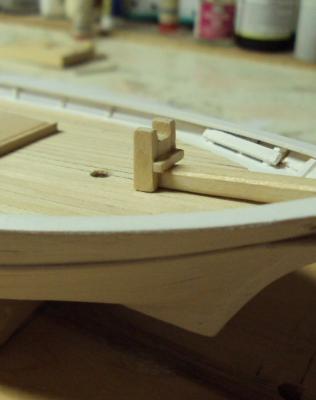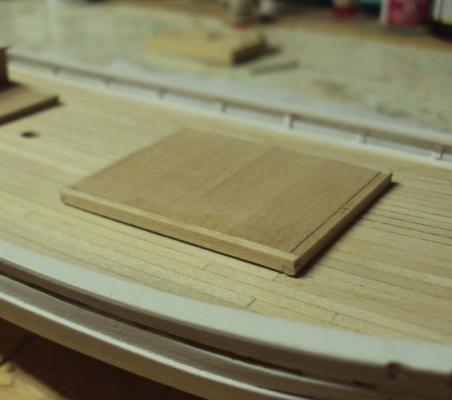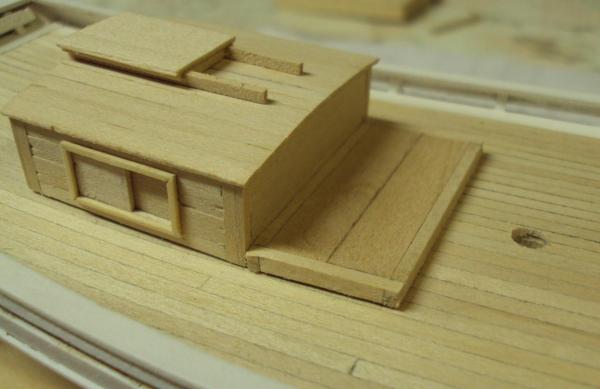
russ
Members-
Posts
3,086 -
Joined
-
Last visited
Content Type
Profiles
Forums
Gallery
Events
Everything posted by russ
-
Generally, the carriages were painted the same as the inner bulwarks and other deck fittings. I think the dull dark red would be a good choice. Russ
- 152 replies
-
- rattlesnake
- Model Shipways
-
(and 1 more)
Tagged with:
-
I would contact Model Expo and request a replacement part. They will send it free of charge. This is their mistake and they will make it right. They are very good about it from all accounts. Russ
- 831 replies
-
- Armed Virginia Sloop
- Model Shipways
-
(and 1 more)
Tagged with:
-
The stand looks good. However, if you are worried about it being knocked about by the cleaning crew, please consider a case of some sort. Russ
- 119 replies
-
- carmen
- constructo
-
(and 2 more)
Tagged with:
-
US Brig Syren by Gahm - Model Shipways
russ replied to Gahm's topic in - Kit build logs for subjects built from 1801 - 1850
Those hatches and shot racks look great. Very well done. Russ -
With the counter framing faired, it is much easier to see the shape of the stern. Very nice work. Russ
- 745 replies
-
- francis pritt
- mission ship
-
(and 1 more)
Tagged with:
-
I would think that the Sultana's general belaying plan would be a good guide for the Hannah. They were of the same general area and vintage. They probably used shroud cleats and various timberheads for belaying points. There are some photos of Harold Hahn's fully rigged model of the Hannah in his book Colonial Schooners. Russ
-
Congratulations. This is really nice looking model. Excellent work. Russ
- 119 replies
-
- carmen
- constructo
-
(and 2 more)
Tagged with:
-
The spars look very good. The tapering appears to be correct. So often spars are not tapered enough, but yours came out very well. Russ
- 119 replies
-
- carmen
- constructo
-
(and 2 more)
Tagged with:
-
No rope between the ends of the gaffs and booms. As for the headsails, it is optional. If you are not going to show any sails, you can simply omit the downhauls and halyards. Same for any topsails. Typically, the gaffs would be lowered if not sails were set, but you can show the gaffs up if it pleases you to have them that way. Your choice. Russ
-
You could lace them to the mast, but my bet is that they actually used hoops. If you can lace it to the masts that would be good. Still a bit fiddly with the masts and shrouds in place. Be careful. Russ
- 119 replies
-
- carmen
- constructo
-
(and 2 more)
Tagged with:
-
Sails might be a bit problematic right now since the masts are already in and the standing rigging is set up. The sails would be attached to hoops that fit around the masts. Those hoops really need to be on the mast before it is stepped. The better order of masting and rigging would to make hoops and stitch them to the completed sails, then lace the sails to the gaffs and booms, then fit the hoops over the masthead, then attach the crosstrees etc and step the masts and then the standing rigging. The gaffs and booms would be pre rigged with halyard and sheet blocks so that they could rigged once the standing rigging is set up. That said, you could try and use brass split rings for the hoops and open the rings slightly to get them around the masts and then squeeze them closed so they do not look like they are split rings. Russ
- 119 replies
-
- carmen
- constructo
-
(and 2 more)
Tagged with:
-
The fact that there is an adjustable tackle at the deck is why it is called a shifting backstay. There are many different variations on this theme over the years, but this is essentially what you have. Russ
- 119 replies
-
- carmen
- constructo
-
(and 2 more)
Tagged with:
-
On similar lines down here in South Mississippi, they seized a loop at the top, then ran it down through a hole in the spreader (or sometimes just a "v" cut in the end of the spreader) and then down to a standard deadeye and lanyard arrangement. However your seems to be a shifting backstay, thus the tackle near the deck and the belay to the cleat. Ours were two separate lines port and starboard so far as I can tell. Russ
- 119 replies
-
- carmen
- constructo
-
(and 2 more)
Tagged with:
-
The cradle and the ratlines look very good. Nice work. Russ
- 119 replies
-
- carmen
- constructo
-
(and 2 more)
Tagged with:
-
Brian: That line of which you speak is just not very good stuff. I have seen it and it is worth it to replace it if you can. I have used both cotton and linen and found that they are both good to work with. Clove hitches are no problem with cotton or linen. I prefer Egyptian cotton. Ratlines should be about 1/2" diameter. At your scale, that would be .006". That is very small so you would probably have to get something relatively close. Russ
- 119 replies
-
- carmen
- constructo
-
(and 2 more)
Tagged with:
-
Nice work on the trail boards. Russ
- 113 replies
-
- model shipways
- willie l bennett
-
(and 1 more)
Tagged with:
-
Gary: The lower yards were sometimes raised and lowered. Not as much as the upper yards, but it seems the lower yards were raised and lowered slightly. According to Lees on page 69 of The Masting and Rigging of English Ships of War, 1625-1860, you can put an eyebolt in the bottom of the cap on either side near the edge of the cap to take a block that will handle the lift. You can also seize blocks in either end of a line and wrap that line around the cap so that the blocks hang off either side. That is a slightly earlier method. I would go with the eyebolts personally. So, you can either follow the plans or do something else. Since the rigging plans follow that of the Annapolis model, you are covered if anyone wants to question your rigging. Either way, you are good to go with whichever method you choose. Russ
- 455 replies
-
- fair american
- model shipways
-
(and 1 more)
Tagged with:
About us
Modelshipworld - Advancing Ship Modeling through Research
SSL Secured
Your security is important for us so this Website is SSL-Secured
NRG Mailing Address
Nautical Research Guild
237 South Lincoln Street
Westmont IL, 60559-1917
Model Ship World ® and the MSW logo are Registered Trademarks, and belong to the Nautical Research Guild (United States Patent and Trademark Office: No. 6,929,264 & No. 6,929,274, registered Dec. 20, 2022)
Helpful Links
About the NRG
If you enjoy building ship models that are historically accurate as well as beautiful, then The Nautical Research Guild (NRG) is just right for you.
The Guild is a non-profit educational organization whose mission is to “Advance Ship Modeling Through Research”. We provide support to our members in their efforts to raise the quality of their model ships.
The Nautical Research Guild has published our world-renowned quarterly magazine, The Nautical Research Journal, since 1955. The pages of the Journal are full of articles by accomplished ship modelers who show you how they create those exquisite details on their models, and by maritime historians who show you the correct details to build. The Journal is available in both print and digital editions. Go to the NRG web site (www.thenrg.org) to download a complimentary digital copy of the Journal. The NRG also publishes plan sets, books and compilations of back issues of the Journal and the former Ships in Scale and Model Ship Builder magazines.




